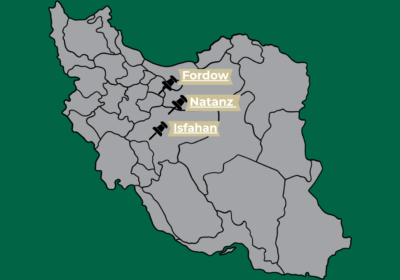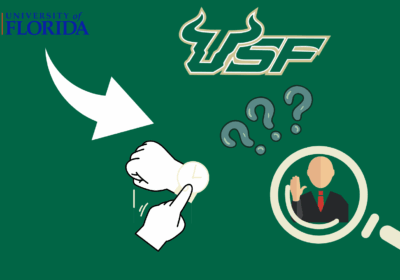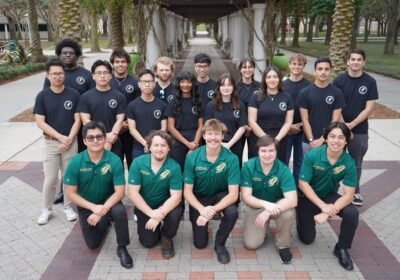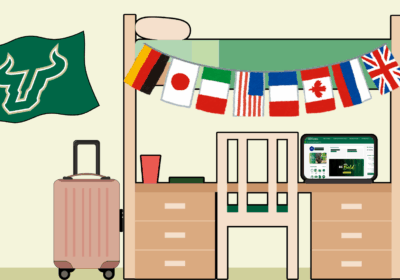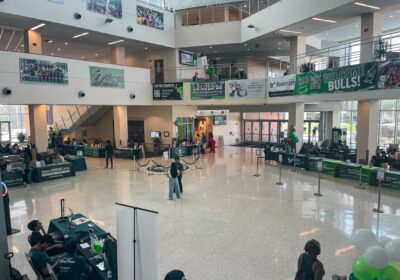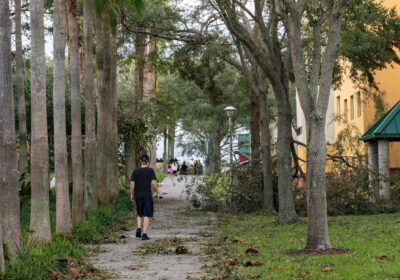How USF might juggle budget cuts for student orgs, departments

Student Government (SG) officials are staring down double the amount of budget cuts to student organizations and departments for the upcoming fiscal year.
This month, the Campus Allocation Funding Committee (CAFC) is sending out “mock budgets” to 500 groups funded by the activities and services (A&S) fee, reflecting these changes.
One of the committee’s goals is to alleviate $5 million from the budget.
The A&S fee is part of student tuition, with a $7 flat fee and an additional $12.08 per credit hour at USF Tampa.
Related: USF student orgs, departments might see budget cuts
CAFC vice chair Emma Goodwin said budget cuts are looming.
Last year, CAFC reduced allocation by $800,000, including a 26% cut to student organization budgets, an 8% reduction in department programming and a 1% decrease in department payroll, Goodwin said.
Goodwin, who is also the SG Tampa campus lieutenant governor, said she expects the cut to be higher this year.
“I’m thinking it’s going to double every year,” she said.
Related: Here is a breakdown of USF’s undergrad tuition fees
CAFC may collaborate with departments to make more informed decisions about budget deductions, Goodwin said.
Some of the departments covered by A&S fees include Recreation and Wellness, the Marshall Student Center and Student Publications – including The Oracle.
Goodwin said making the same cuts to all departments isn’t “feasible.”
“We’re going to have more conversations about, ‘Where in your department can you give a little money so that this other department can use it to thrive?’” Goodwin said.
CAFC is also considering alternative monetary sources to ease the pressure on A&S funding, Goodwin said.
The committee is discussing moving certain salary positions, such as department directors, “off the A&S fee,” she said
CAFC is also reviewing how other universities in the state use A&S funds. She said similar departments at other universities are not supported by that institution’s A&S budget.
Goodwin said departments such as the Center for Leadership and Civic Engagement, Student Publications and Student Accessibility Services are not funded by A&S fees at other state universities.
For example, the University of Florida’s student newspaper, The Independent Florida Alligator, is student-owned.
“We’re using that to our advantage when talking with administration,” Goodwin said. “We’re like, ‘These other universities don’t have these departments listed as A&S funding, why don’t we look into that too?’”
Departments receive funding for events and payroll expenses, while student organizations receive supplemental funding primarily for events, Goodwin said.
“We can’t support every single organization fully,” Goodwin said. “We do try to focus heavily on our departments because they keep the university running.”
The request for student organizations is around $650,000 this year, compared to $500,000 allocated last year, Goodwin said.
The budget form student organizations fill out includes tabs for instructions, SG standards, summary, event requests, recurring events, documentation and other items.
Organizations can request funding for up to 10 events a year, with a cap at $1,200 per event and a $500 limit for recurrent events, Goodwin said.
Other expenses include promotional items, such as T-shirts or hats, capped at $5 per item and $500 per year.
Before allocating funds, the CAFC needs the university to share the total amount collected from A&S fees based on the current year’s enrollment numbers, which is typically between $13.6 million and $13.8 million, Goodwin said.
However, most organizations don’t spend their entire budgets, Goodwin said.
Student Business Services reports the leftover money not spent by A&S-funded groups. With that, CAFC can add that rollover amount to the total mock budget.
“It’s really frustrating allocating money and then no one uses it,” Goodwin said.
Related: USF campuses have different A&S fee rates. Here’s why.
Despite only receiving about $13 million from A&S fees, CAFC allocates around $18 million, relying on leftover funds from the past year to cover the gap.
“As prices increase and students and departments use more of their money, we’re getting less and less rollback every year,” Goodwin said. “At some point, we’re only going to have the $13 million.”
She said CAFC might consider the utilization rates when distributing money with the possibility of higher deductions from organizations using less of their budget.
Goodwin said she is expecting mock budgets to be sent to departments and student organizations before spring break, which starts March 17.
The university’s president will sign the finalized budgets in May.
“It’s a long process, but it’s necessary,” Goodwin said.


